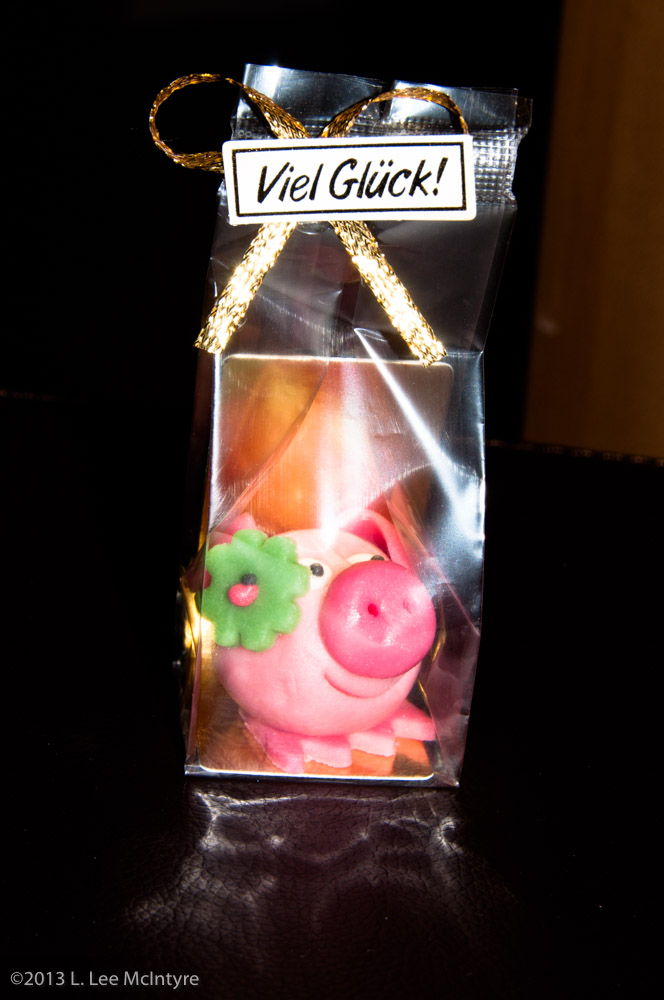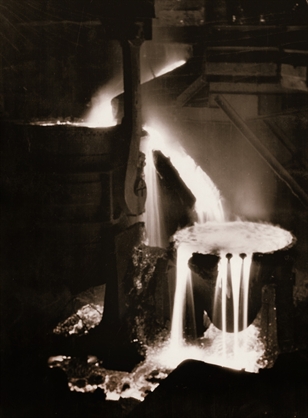Thanks to everybody for all the well-wishes here and elsewhere regarding my photography talk last night at the d.a.i. here in Tübingen. I’m happy to report that all went very well.
There were 40-50 people who turned out to hear me talk about 20th Century American Photographers. The basic idea for the talk — as described in the talk description – was that I would talk about a few iconic examples from famous American photographers and then relate how understanding something about these examples can help everyone take better photographs, with any kind of camera.
All in an hour or less.
Somehow it all came together in a cohesive lecture, and the feedback afterwards was very positive. There were also some good questions from the audience, which is always gratifying when you give a presentation.
Of course, I inevitably realize later what could have been a better answer to a particular question. For example someone asked if I had studied photography. I basically just said no, I was mainly self-taught. I did mentioned learning elements of black and white darkroom skills with my Aunt Kathy when I was a kid and we commandeered my parents’ bathroom. What I could have also said was no, I didn’t go to art school to study photography, but then many of the photographers I presented during the lecture were also self-taught, too.
And someone asked if I did any black-and-white photography, and I answered that I don’t — digital cameras take color by default, and I like capturing the vibrancy of the world in color. I added that I usually change an image to black and white only when I’ve made a mistake and the color isn’t good in the image. It got a laugh, which was the intent. But I could also have said that sometimes I will change to black and white to enhance the shapes, shadows, etc., all things I mentioned as being done in some of the famous examples we looked at.
Ah well, they say you always thing of the perfect reply in the taxi cab ride home after the event, don’t they.
But I think everything did go really well last night. All-in-all, a successful venture that was also a lot of fun to do.
Indeed, I had a lot of fun reading up on the history of photography last month, refreshing my memory about some photographers, and learning new things about others. Many thanks to Chris as well – years ago he blogged about photography, and I got a lot of ideas for my talk from issues he discussed about on his blog. BTW, Chris also gave me a traditional German marzipan pig Glücksbringer, “lucky charm”, that I’m sure was responsible for bringing me luck last night. 😉
My talk wasn’t a technical one — rather, I chose to focus on anecdotes about the photographers and how they approached the taking of their shots, rather than on the mechanics of how the photos were taken. My father always taught me that it’s the people and their stories that make history come alive, and I think the same thing applies when looking at a photograph. Why did the photographer take it? What inspired them? What was happening in their career/life/world at the moment they snapped the shutter?
One of my favorite stories that I incorporated into the talk last night was about Margaret Bourke-White, an American remembered best for her photojournalism work with LIFE magazine. She was fearless, and her career includes a series of firsts:
- First photographer hired for Fortune magazine
- First Western photographer allowed into Stalinist Russia
- First female photographer allowed to take photos in combat zones
- One of the original four photographers hired by LIFE magazine when it started in 1936. One of her photos had the honor of being used on the cover of the very first edition of LIFE.
However, my favorite story about Bourke-White is actually from earlier in her career. In 1929, she was already working as a photographer, and she got the idea that it would be interesting to take photos inside the Otis Steel Mill, which was in Cleveland, where she lived. She approached the owners and asked for permission to go inside the mill.
But this was 1929. A woman going into a steel mill? Unheard of! They explained to her that was hot and dirty and gritty inside that mill. It was no place for a delicate woman such as herself — she would probably faint!
Bourke-White calmly replied that they didn’t need to worry, she wouldn’t faint, as she was definitely not the fainting kind.
And she wasn’t. The owners finally granted her access to go inside the mill. She later wrote:
Machine parts were being made from molten steel; there was the sudden magic of flowing metal, flying sparks. I loved that. — Margaret Bourke White
She did indeed face some challenges while taking photos inside the mill, but they were all technical issues having to do with the red and orange glow of the light coming off the cascading rivers of molten steel. Those colors didn’t register on the black and white film being used at that time. Bourke-White overcame that problem, and went on to produce a series of stunning images inside the mill. The photos were so impressive, in fact, that the Otis Steel Mill owners themselves purchased her work, since it so superbly showed off the beauty and majesty of their factory.
Great story about a great photographer. And it was great to have the opportunity to talk about her and all the others last night at the d.a.i. in Tübingen!



I wish I had been there to hear all. Now maybe a good magazine piece to follow so many can read all these interesting anecdotes.
A magazine piece would be a great idea!
love that story. It is so hard to be fearless. Then with fear you get a lot of satisfaction working through it. I have been scared at every step. Now I use that adrenalin to carry me through to a new place. I hope all that is happening to you. 50 people. OH MY
Thanks for the comments, everyone!
Kathy, as you say, I think for me “fearless” doesn’t mean having no fear, but not being held back by it. 🙂